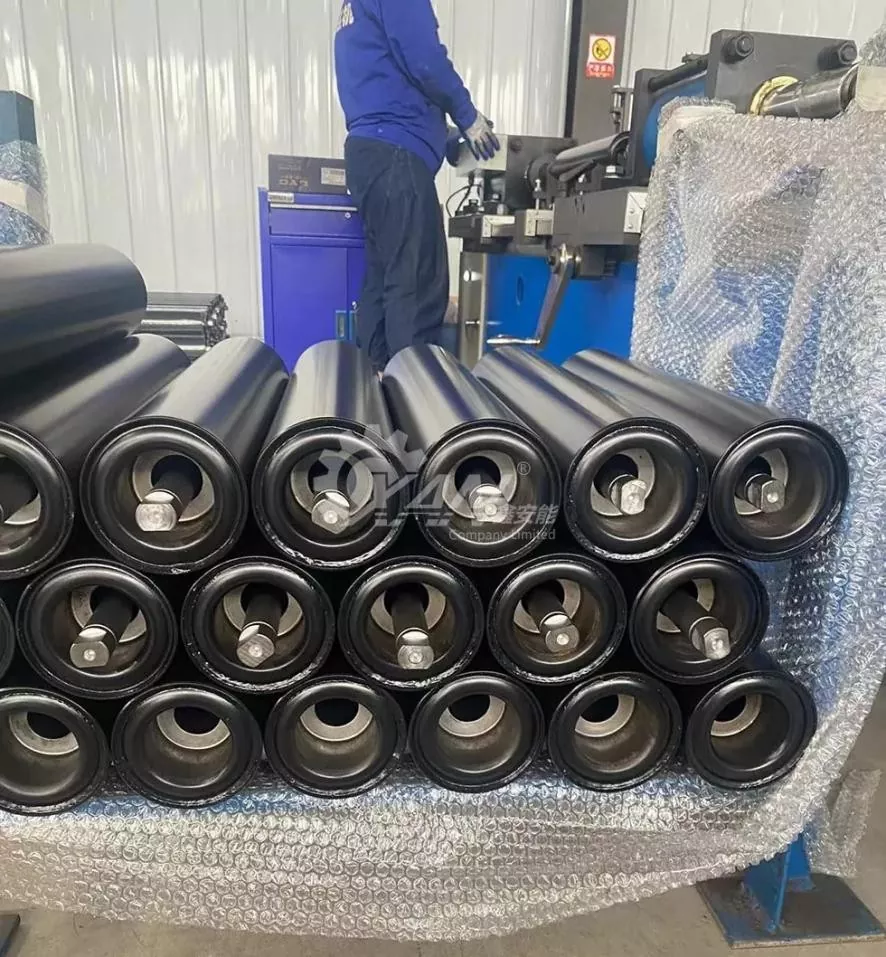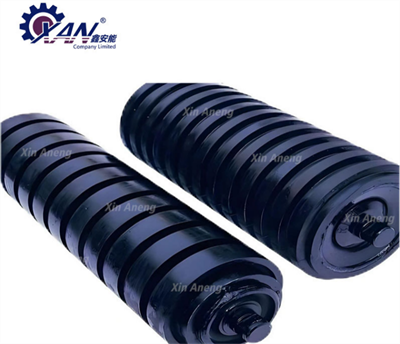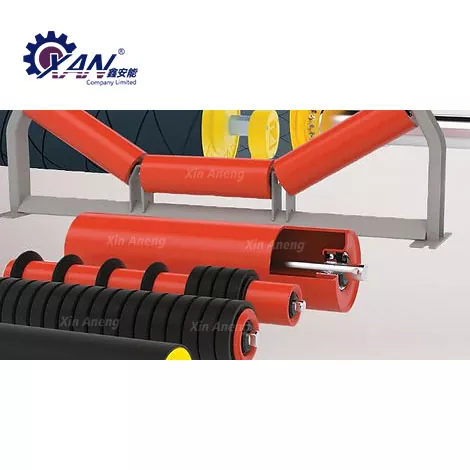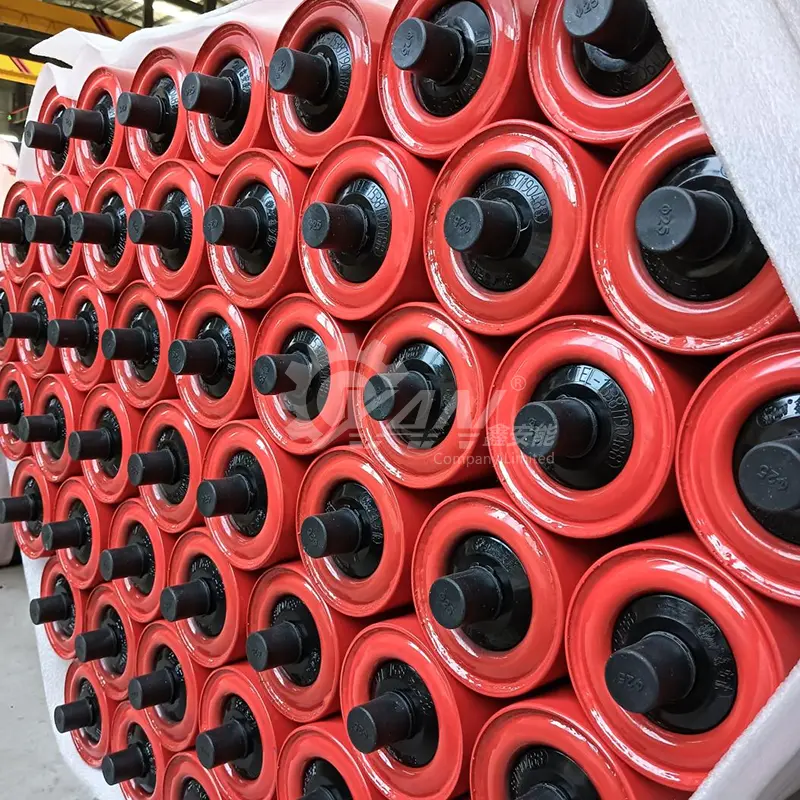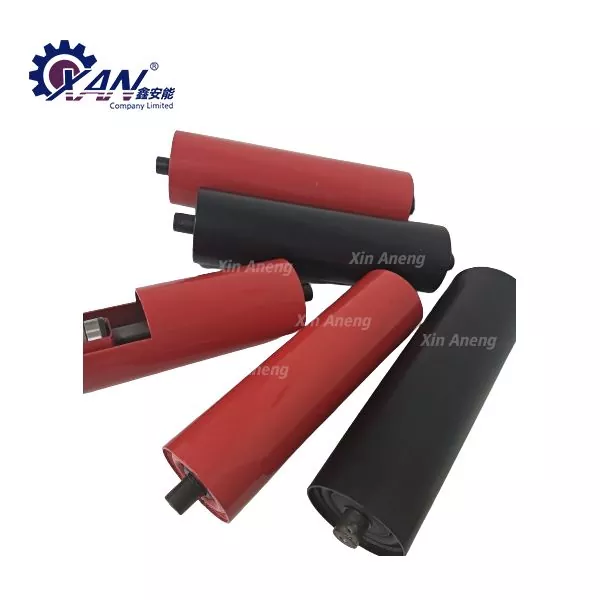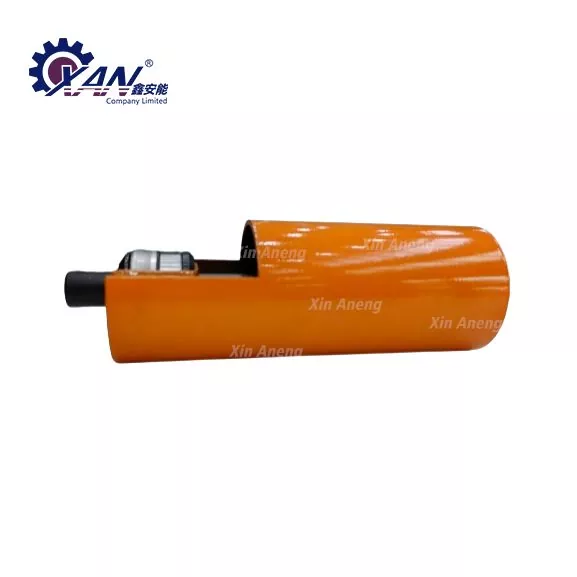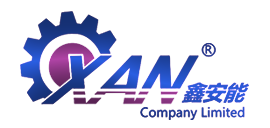
Conveyor roller is an important part of belt conveyors, with many types and large quantities, which can support the weight of conveyor belts and materials. It accounts for 35% of the total cost of a belt conveyor and generates more than 70% of the resistance, so the quality of the idler is particularly important.
The function of the idler roller is to support the conveyor belt and the weight of the material. The roller must be flexible and reliable. Reducing the friction between the belt and the idler plays a key role in the life of the belt, which accounts for more than 35% of the total conveyor cost. Although the idler is a small component in a belt conveyor and the structure is not complicated, it is not an easy task to manufacture a high-quality idler.
Rollers can be divided into support roller set, self-aligning roller sets and impact roller groups according to their uses.
There are two main types of conveyor idlers: load-bearing idlers and return idlers. Load-bearing rollers (sometimes referred to as troughed rollers) support conveyor belts that carry material, while return rollers are used to support no-load belts.
|
Belt width(mm) |
Diameter |
Shaft |
Length(mm) |
|
|
Flat Return Roller |
Trough Roller |
|||
|
500,650,800,100,1200,1400 |
89 |
20 |
600,750,950,1150,1400,1600 |
200,250,315,380,465,530 |
|
500,650,800,1000,1200 |
108 |
600,750,950,1150,1400 |
200,250,315,380,465 |
|
|
500,650,800,1000,1200,1400 |
133 |
600,750,950 |
200,250,315,380,465,530 |
|
|
500,650,800,1000,1200,1400,1600 |
89 |
25 |
600,750,950,1150,1400,1600,1800 |
380,465,530,600 |
|
500,650,800,1000,1200,1400,1600 |
108 |
600,750,950,1150,1400,1600,1800 |
380,465,530,600 |
|
|
650,800,1000,1200,1400,1600,1800,2000 |
133 |
750,950,1150,1400,1600,1800,2000,2200 |
380,465,530,600,750 |
|
|
1000,1200,1400,1600,1800 |
159 |
1150,1400,1600,1800,2000 |
380,465,530,600,670 |
|
|
500,650,800,1000,1200,1400,1600 |
89 |
25 |
1150,1400,1600,1800 |
380,465,530,600 |
|
500,650,800,1000,1200,1400,1600 |
108 |
1150,1400,1600,1800 |
380,465,530,600 |
|
|
650,800,1000,1200,1400,1600,1800,2000 |
133 |
1150,1400,1600,1800,2000,2200 |
380,465,530,600,670,750 |
|
|
1000,1200,1400,1600,1800 |
159 |
1150,1400,1600,1800,2000 |
380,465,530,600,670 |
|
|
1000,1200,1400,1600 |
89 |
30 |
1150,1400,1600,1800 |
380,465,530,600 |
|
1000,1200,1400,1600 |
108 |
1150,1400,1600,1800 |
380,465,530,600 |
|
|
1000,1200,1400,1600,1800,2000 |
133 |
1150,1400,1600,1800,2000,2200 |
380,465,530,600,670,750 |
|
|
1000,1200,1400,1600,1800 |
159 |
1150,1400,1600,1800,2000 |
380,465,530,600,670 |
|
|
1000,1200,1400,1600,1800,2000 |
133 |
1150,1400,1600,1800,2000,2200 |
380,465,530,600,670,750 |
|
|
1000,1200,1400,1600,1800 |
159 |
1150,1400,1600,1800,2000 |
380,465,530,600,670 |
|
|
1600,1800 |
159 |
40 |
1800,2000 |
600,670 |
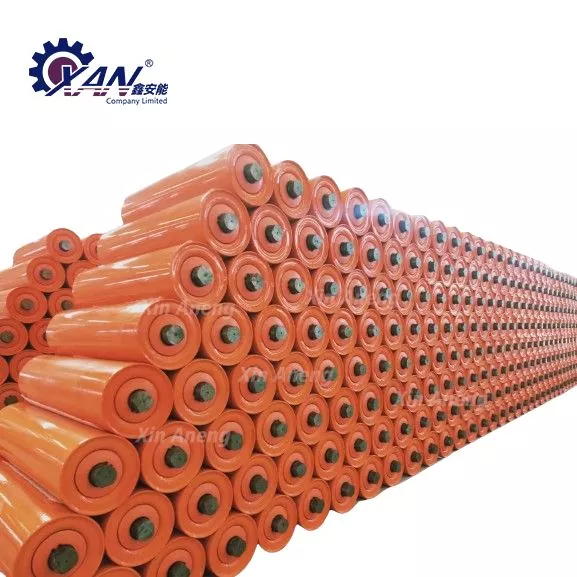
1. What is a roller conveyor?
Roller conveyors are a series of rollers supported within a frame where objects can be moved either manually, by gravity, or by power.
2. How do conveyor belt rollers work?
The basic structure of the roller conveyors is simple, some rollers placed in parallel and anchored perpendicularly to a structure that acts as a guide and support for the entire system. The rollers can rotate on their anchors to the structures, which allow the products to move.
3. What is the basic principle of conveyor?
Typically, conveyor systems consist of a belt stretched across two or more pulleys. The belt forms a closed loop around the pulleys so it can continually rotate. One pulley, known as the drive pulley, drives or tows the belt, moving items from one location to another.
Our company has a comprehensive quality assurance system. Before production begins, we will submit a comprehensive quality assurance plan for this project. This plan includes quality assurance procedures, organizational methods, qualifications of involved personnel, and controls for all activities affecting project quality such as design, procurement, manufacturing, transportation, installation, commissioning, and maintenance. We have dedicated personnel responsible for quality assurance activities.
1.Inspection and control of equipment;
2.Control of purchased equipment or materials;
3.Control of materials;
4.Control of special processes;
5.On-site construction supervision;
6.Quality witness points and schedules.
